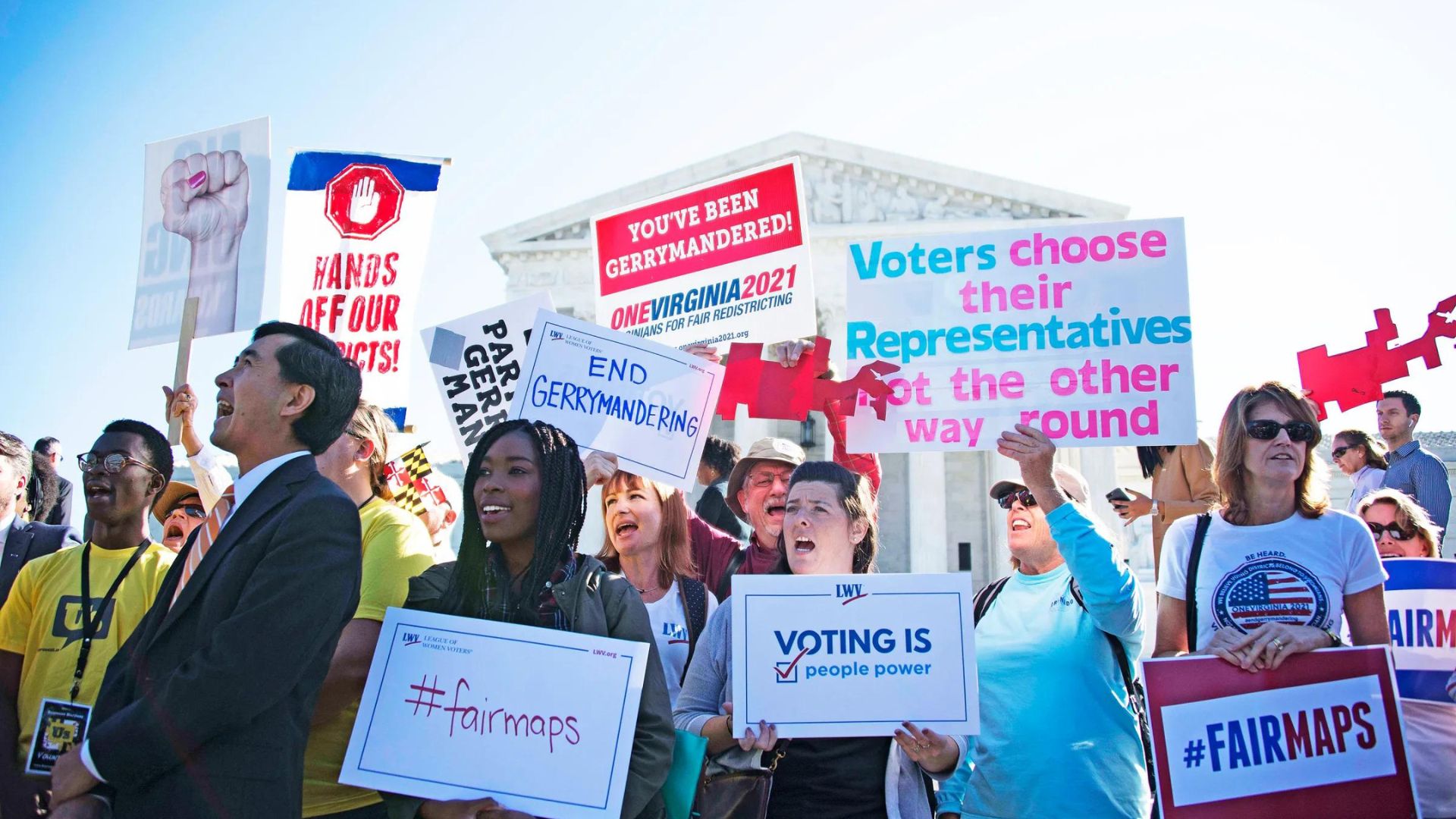Gerrymandering is the practice of manipulating electoral district boundaries to favor one political party over another. While redistricting is a necessary part of the political process to reflect population changes, gerrymandering takes this a step further by deliberately redrawing district lines to skew election results. This practice has far-reaching consequences for democracy, often distorting representation and undermining the principle of fair elections. In this article, we explore how gerrymandering affects election outcomes and what it means for voters.

Types of Gerrymandering
There are two primary types of gerrymandering that affect election outcomes: partisan gerrymandering and racial gerrymandering.
- Partisan Gerrymandering
This occurs when district boundaries are drawn to benefit a specific political party. By packing voters of one party into a small number of districts or spreading them thinly across many districts (called “packing” and “cracking”), the party in control of redistricting can secure more seats in the legislature, even if they receive fewer total votes. - Racial Gerrymandering
This type of gerrymandering involves manipulating district lines to dilute the voting power of racial or ethnic minorities. By dispersing minority voters across multiple districts (cracking) or concentrating them into one district (packing), gerrymandering can reduce their ability to elect representatives of their choice, limiting their influence on elections.
Distorting Representation
One of the most significant effects of gerrymandering is the distortion of political representation. In a gerrymandered system, the proportion of seats won by a party can be wildly disproportionate to the share of votes it receives. This happens because district lines are strategically drawn to ensure that one party’s voters are either over-concentrated or under-represented in specific districts.
For example, in a state where one party receives 55% of the vote statewide, they might win 80% of the available seats due to favorable district boundaries. Conversely, the other party, despite having 45% of the vote, may only win a handful of seats. This skewed representation undermines the democratic principle of one person, one vote and creates a legislature that doesn’t reflect the will of the voters.
Entrenching Political Power
Gerrymandering allows the party in power to remain in power by shaping districts that favor their candidates. When the lines are drawn to protect incumbents or ensure a particular party wins most of the seats, it becomes much harder for the opposing party to challenge them, even in closely divided states. This leads to a system of entrenched political power, where the same party dominates elections cycle after cycle, regardless of shifts in voter preferences.
In some cases, this can make elections feel predetermined, discouraging voter turnout and political competition. Candidates in gerrymandered districts often run unopposed or face only token opposition, reducing the incentives for elected officials to be responsive to their constituents.
Reducing Voter Influence
Gerrymandering also reduces the overall influence of individual voters. In heavily gerrymandered districts, voters who belong to the minority party often feel that their votes don’t matter, as their candidate has little chance of winning.
When voters feel that their participation won’t change the outcome, it weakens democratic engagement and trust in the electoral process. Over time, this leads to political apathy and a further decline in voter participation, making elections even more uncompetitive.
Impact on Policy
The consequences of gerrymandering go beyond election outcomes; it also affects governance and policymaking. When legislators are elected from safe, gerrymandered districts, they have little incentive to compromise or work across party lines. This leads to increased political polarization in government, as representatives cater to their party’s base rather than seeking to represent a more diverse constituency.
Because gerrymandered politicians feel secure in their seats, they may focus more on maintaining their party’s dominance than addressing the broader needs of the electorate. This can result in policies that favor the interests of a small group of voters, while ignoring the concerns of the wider population.
Legal Challenges and Reforms
Over the years, gerrymandering has faced numerous legal challenges, with some cases reaching the Supreme Court. Courts have ruled that extreme racial gerrymandering is unconstitutional, but they have been less willing to rule on partisan gerrymandering, leaving the issue largely unresolved at the federal level.
Conclusion
Gerrymandering has a profound impact on election outcomes by distorting representation, entrenching political power, and reducing voter influence. While it allows the party in power to maintain control, it undermines the democratic process, leading to less competitive elections and a disillusioned electorate. Though legal and legislative reforms offer hope for addressing the issue, gerrymandering remains a significant challenge for modern democracies. Ensuring fair representation will require continued efforts to reform the redistricting process and empower voters.

